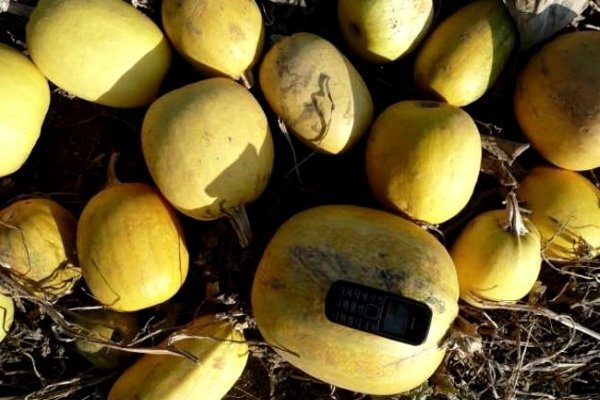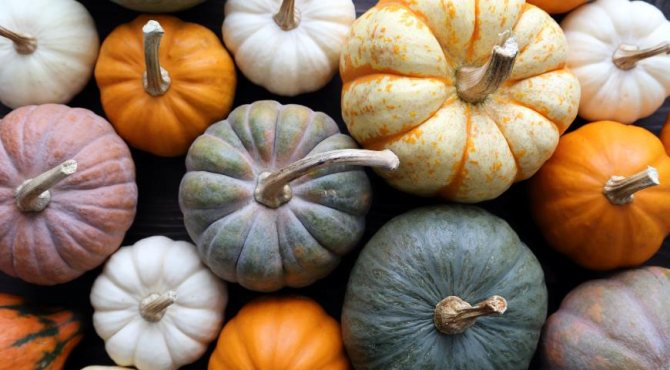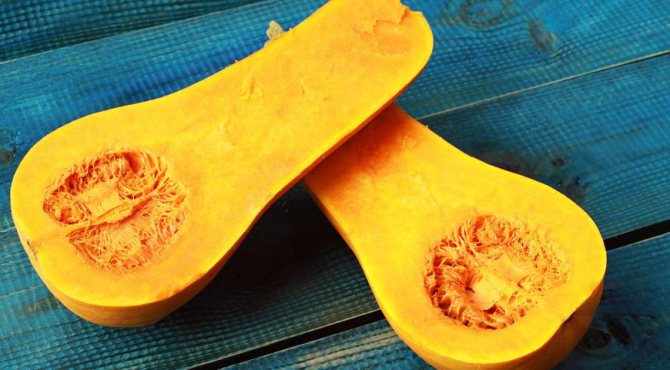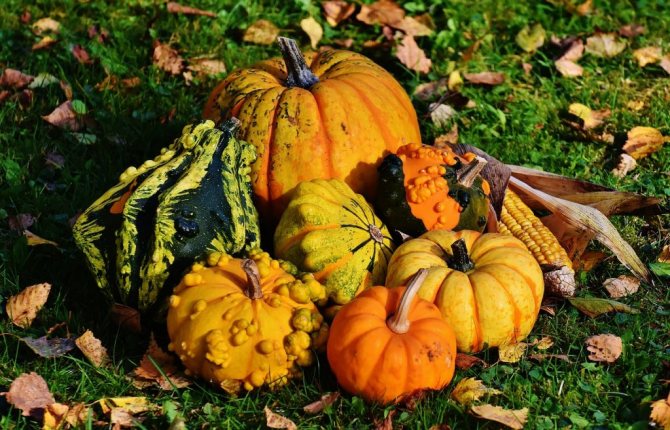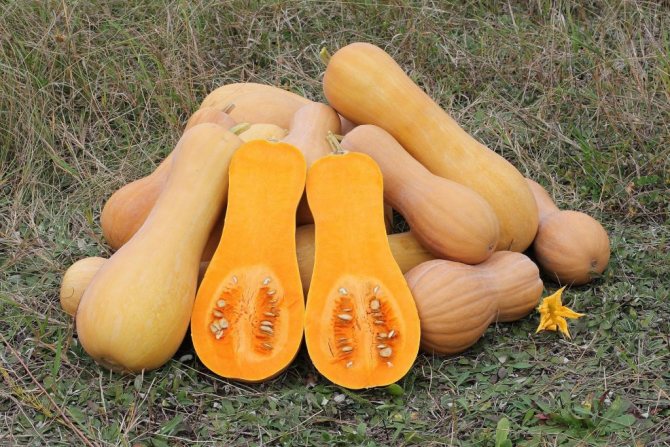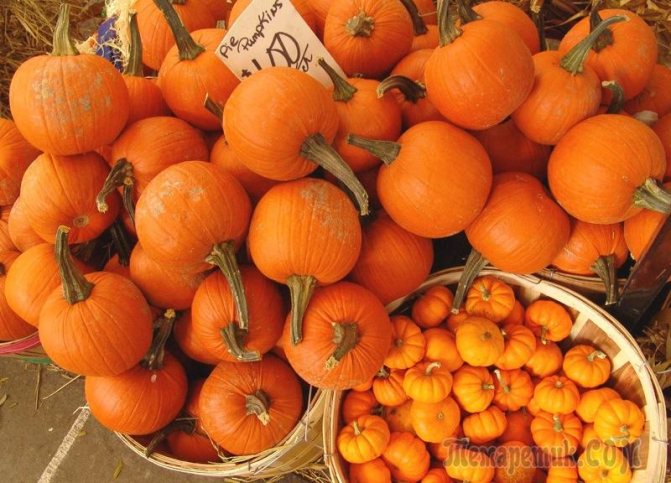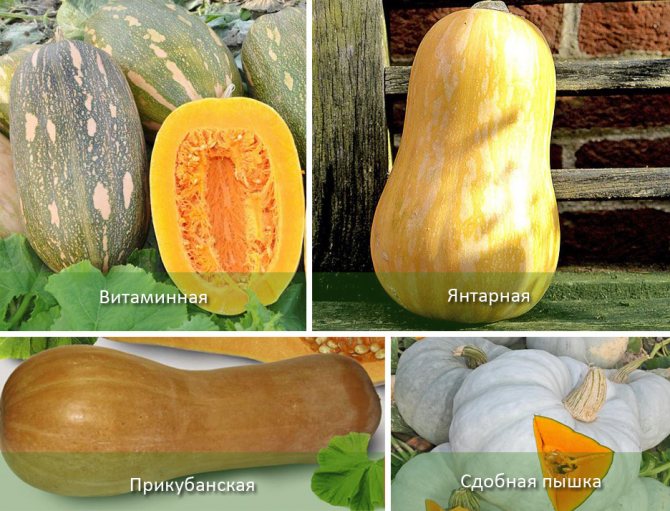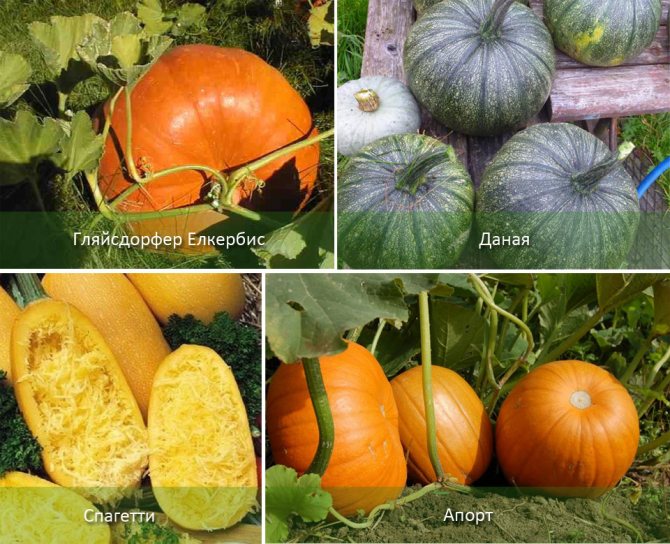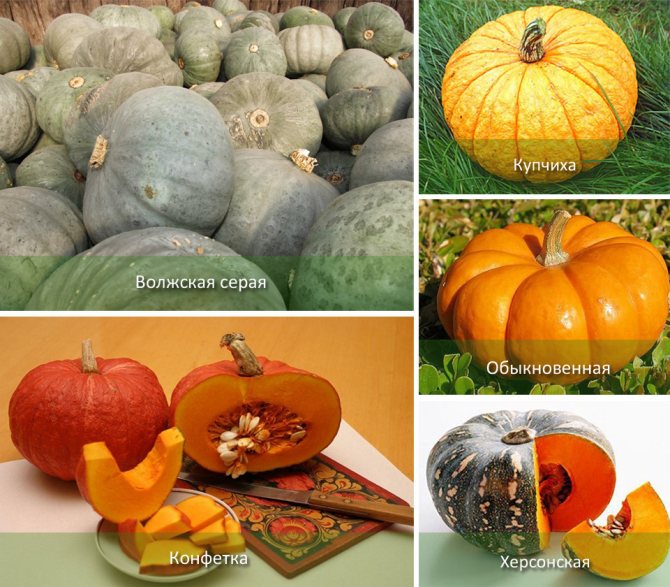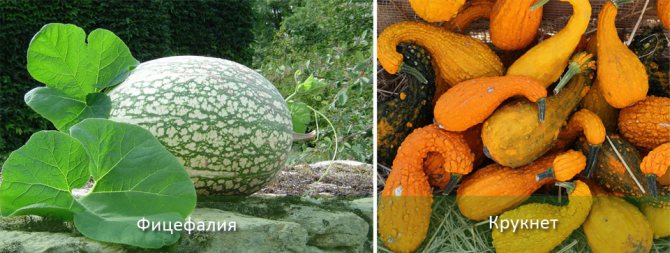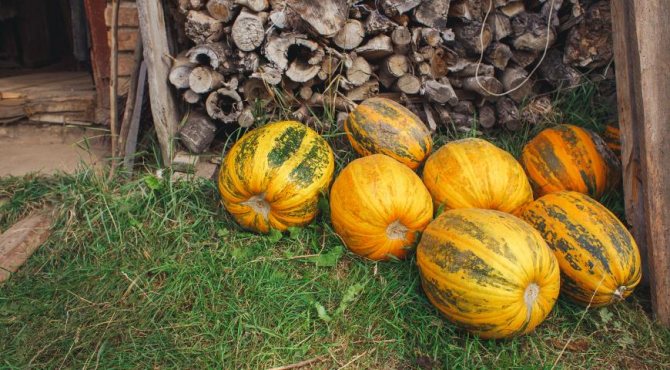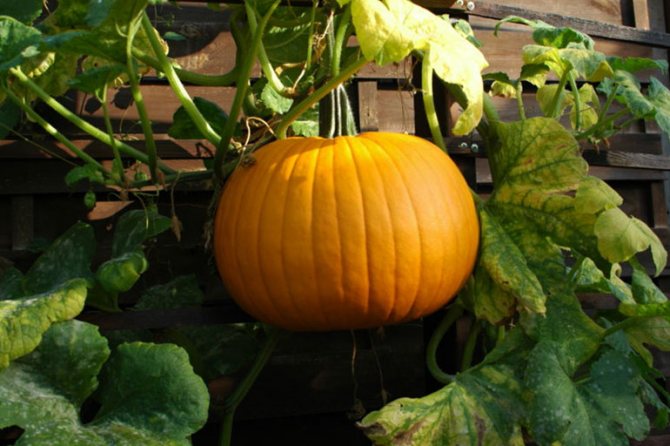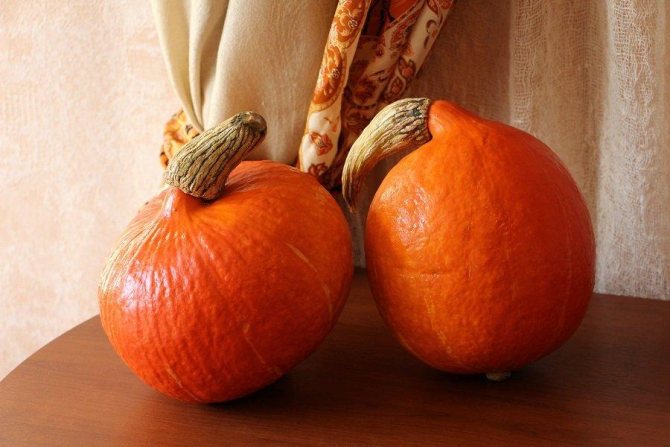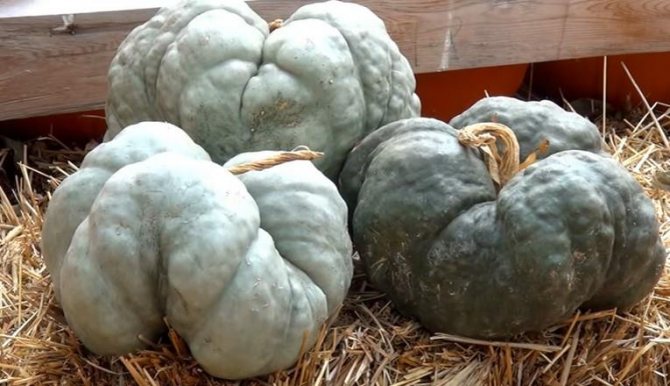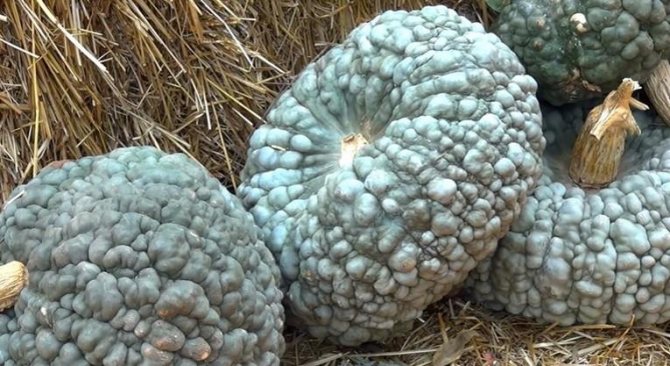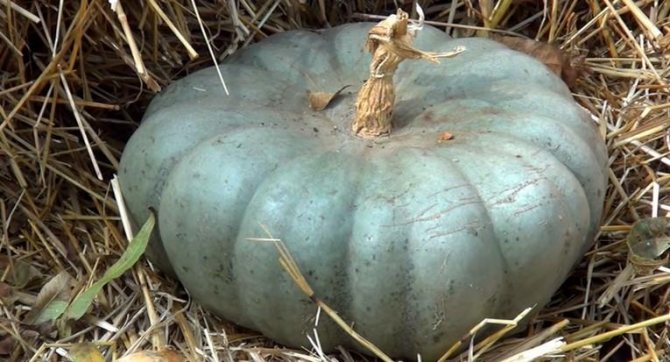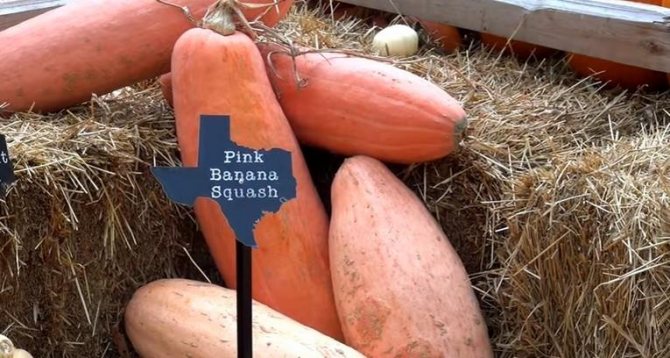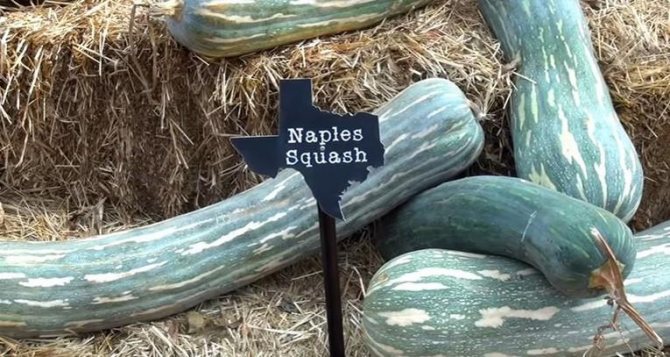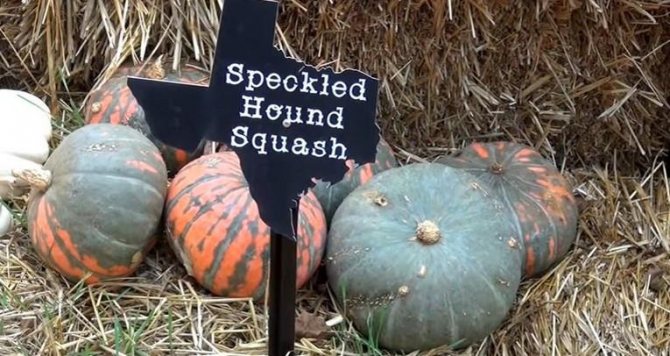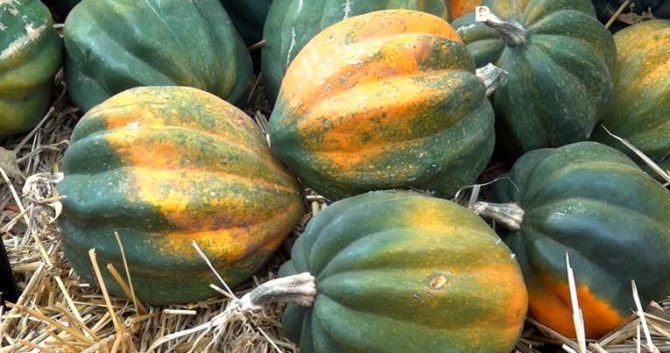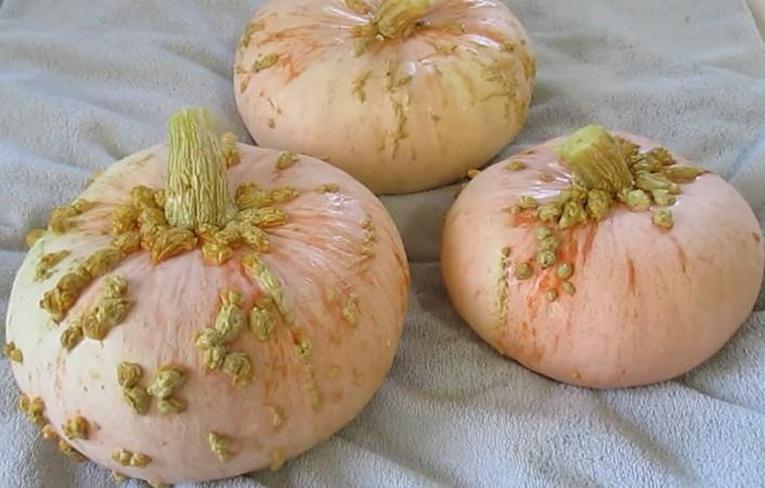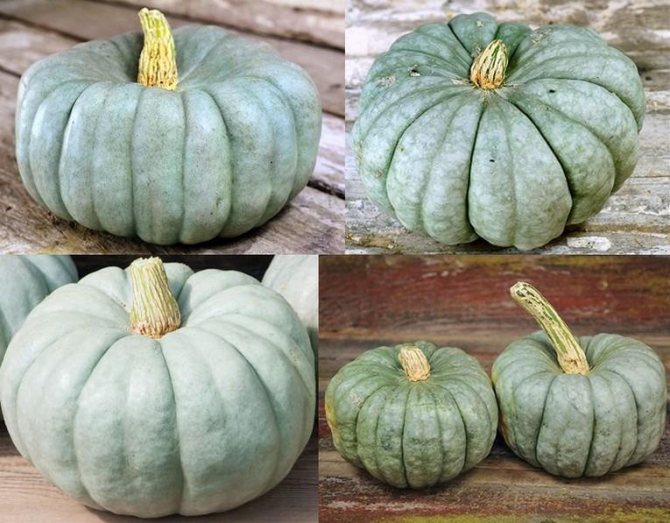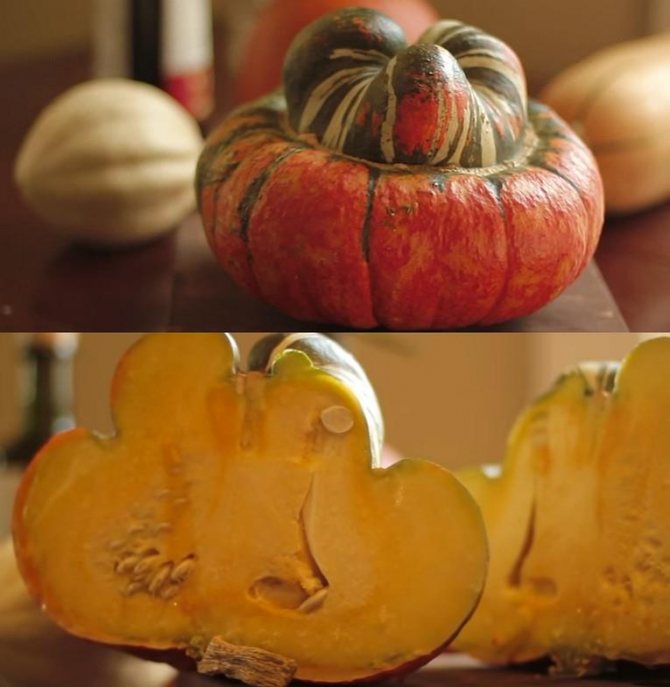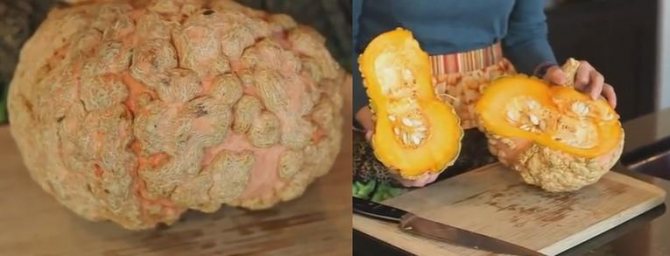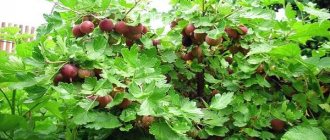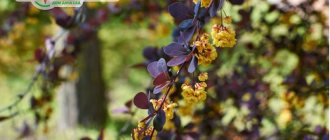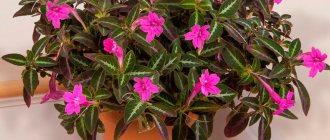.
Mexico is considered the homeland of the decorative vegetable marrow. This plant has been cultivated in the countries of South America for 3 millennia BC. The marrow was brought to Europe by Columbus after visiting America. In Russia, it began to be grown only in the 19th century. Since that time, a lot of new varieties and varieties of this culture have appeared. Each of which has its own characteristics of planting, growth, care, disease and different culinary and aesthetic purposes.
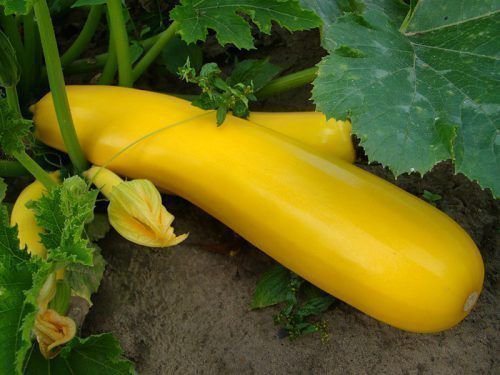
Zucchini Zolotinka is an attractive decorative variety
Prose
It would seem what a prosaic plant a pumpkin is! Probably, there are no people in our country who would not know what a pumpkin is, what it looks like and how many nutrients it contains that determine its nutritional, dietary value and medicinal properties. The very word "pumpkin" evokes direct associations, rather, with food, and not at all with beauty! Some decorative pumpkins can also be eaten, but only while they are immature and their skin is soft. Having taken out the core, they can be stuffed with meat, vegetables, stewed in sour cream.
In mature form, they are already inedible, have a hard crust and, most often, a bitter flesh.
However, even at a young age, decorative pumpkins are much inferior in taste to their closest relatives from the pumpkin family - courgettes, zucchini, squash and real big sweet pumpkins.
A decorative pumpkin will give you immeasurably more pleasure if you create in your yard a spectacular living decoration with large funnel-shaped flowers, which will be adorned with fruits of the most incredible shapes and colors closer to autumn.
Pumpkin varieties for Siberia, the Urals
The temperature in these areas is unstable, frost and drought often occur, so there are several unpretentious varieties.
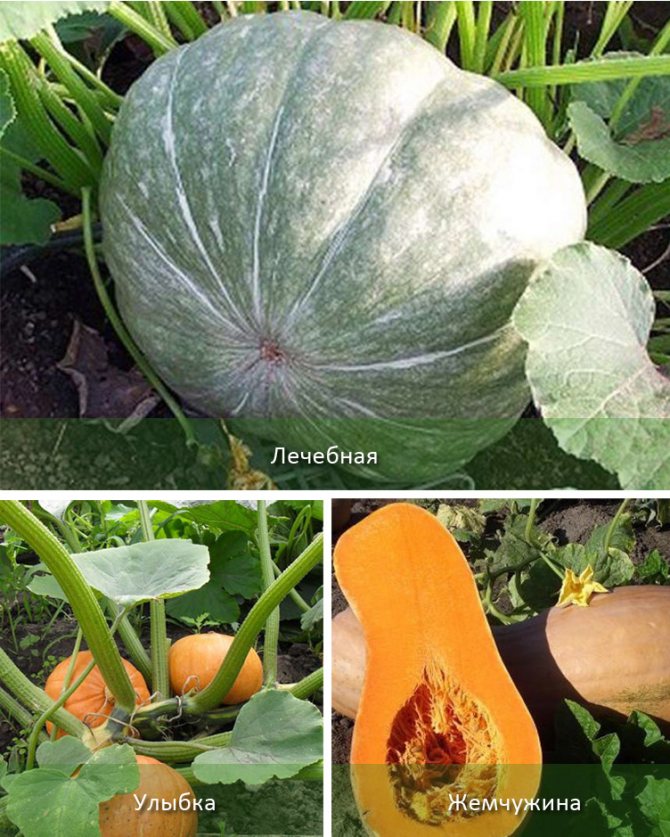

| Variety | Description | Ripening period | Application |
| Therapeutic. | Medium fruits with a bluish color and small greenish blotches. It can withstand temperatures up to -2 ◦С, can be stored for a long time. Able to gain weight up to 5 kg. | Early ripe. | Diet food. |
| Smile. | It grows in bushes, on which up to 8-9 pumpkins appear. The peel is orange in color with beige longitudinal lines. It can be stored for a long time, it retains its rich taste and aroma even at room temperature. | Early ripening. | Salads, soups, stews. |
| Pearl. | Sturdy enough with large elastic lashes. The dark yellow rind is covered with an orange fine mesh and bright markings. The pulp is reddish with an unusual pleasant taste. Gains up to 6 kg. | Late ripening. | Baking, baby food. |
Miniature decorative pumpkin
Pumpkin is perhaps the only plant in the world whose fruit weight can vary widely - from 30 g to 300 kg. But if earlier they were more often surprised at the huge size of pumpkins, then it seems that the day is not far away when rivalry will unfold between pumpkins in several nominations - miniature, riot of colors and unpredictability of forms.
The fruits of specially bred decorative pumpkin varieties can decorate not only the garden, but also the interior of a city apartment, complement a flower arrangement or a real work of art. In the shade of the pumpkin plantings, the coolness keeps well, and the green carpet of leaves is decorated with bright yellow flowers until late autumn. Well, but not so luxuriantly pumpkins grow in spacious pots indoors - on verandas and terraces.All that is needed is lighting and constant feeding.
Ornamental culinary variety
Some ornamental zucchini varieties are used in cooking. Small round zucchini can be stuffed with mushrooms, meat, vegetables. They are delicious when salted and pickled. Such a well-known variety, which has recently been gaining great popularity, as "Spaghetti" pleases lovers with new dishes.
In order to get a dish that resembles noodles in structure, but low in calories, take a whole fruit of this variety, pin it in several places and boil it for 30 minutes.
When the vegetable has cooled, cut it in half and remove the core. You will see that the zucchini flesh has stratified into pasta-like fibers. Prepare your favorite sauce and serve. This dish is low in calories and very nutritious. Eating decorative zucchini varieties for food will save your figure and health. And using it as a decor will also bring joy from the work done and an aesthetic look.
Funny pumpkins
Decorative pumpkin (Cucurbita pepo var. Ovifera) is an annual climbing plant. Its other name is ordinary curly pumpkin. Climbing stems, from 2 to 6 m in length, with many lateral shoots. Large, rounded or cordate leaves, five-lobed, wrinkled, with spiny hairs, on long, hollow petioles. In the axils of the leaves there are antennae, with the help of which the stem of the plant can cling to the support and rise up. The pumpkin has single yellow unisexual flowers, sometimes very large.
The most interesting thing about the decorative pumpkin is the fruit.
They are much smaller than pumpkin fruits used for food - their diameter or height rarely exceeds 10-15 cm, and the shape and color of the fruits are surprisingly varied and decorative.
The shape of the decorative pumpkin is unusually interesting: spherical, disc-shaped, turbid, club-shaped, pear-shaped, star-shaped, bottle-shaped, bell-shaped, etc. The surface of decorative pumpkins can be smooth and lumpy, sometimes with outgrowths-horns that protrude along the edges of the crown or fruit and resemble tentacles of a starfish, its shades vary from white to yellow, orange or green.
Striped, spotted, two-colored fruits in the form of a boletus mushroom or similar to the head of a dwarf in a red cap on one side look very funny.
Beautifully colored, bright, exotic pumpkins hang on plants until frost, pleasing the eye: orange (tangerine) - bright yellow and orange balls; warty - yellow with an uneven bumpy surface; brindle - yellowish-beige with a pattern; watermelon - green with light stripes; pear-shaped - yellow, pear-shaped in shape; crown - of an unusual refined shape with horns-protrusions above each lobule, etc.
Interesting decorative pumpkin turbid.
The shape of the fruit of this decorative pumpkin resembles a turban, which is why it is sometimes called Turkish.
However, this pumpkin came to us not from Turkey, but from Western China. The turban-shaped decorative pumpkin has several varieties: large-calf, medium-calf, small-calf and small-fruited red. On the same plant of a turban pumpkin, there are almost never two identical fruits, they always differ in color tone, a variety of shades and patterns - stripes, strokes, spots. In small-fruited red ornamental pumpkin, the pulp may have a bitter taste, but in large-and small-calf pumpkin it is always sweet, yellow-orange, with a high content of carotene. These pumpkins are quite suitable for eating, you can cook jam, candied fruits from them, the pulp does not boil over, the slices are transparent, of a beautiful amber color. The seeds are also tasty.
Decorative types of zucchini and their beneficial properties
Zucchini has a positive effect on the human body.The main positive quality is the low calorie content of zucchini. Such characteristics were to the liking of fashionistas who follow their figure. Nutritionists include zucchini in their diets.
The substances included in the zucchini have an effective effect on the human cardiovascular system, improving its work. It contains elements of iron, calcium, sodium, magnesium and phosphorus. But the record holder among them is potassium (238 mg per 100 g of product). Which makes it an indispensable tool in helping the heart work. If the patient has such diseases as atherosclerosis, hypertension and anemia, doctors advise including it in the patient's diet. The substances present in zucchini help remove excess fluid from the body. Also, regular consumption of zucchini in food helps to cope with constipation and diseases of the gastrointestinal tract, bringing it back to normal. It is not for nothing that doctors recommend introducing mashed potatoes from zucchini to be the first to feed an infant.
The antioxidants contained in zucchini keep the skin youthful. Cosmetologists have long been using zucchini to create cosmetic masks, with the help of which women have toned their facial skin. The increased moisture content of the zucchini moisturizes it and improves its color and tone. Safety masks create an invisible UV barrier.
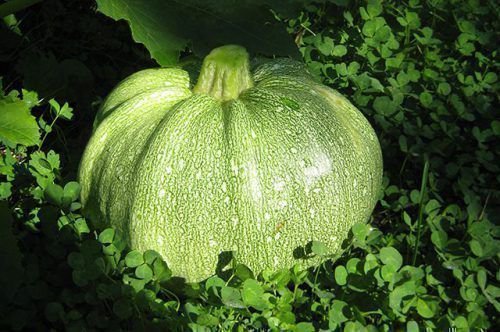

Zucchini Ball, like other varieties, can be recommended as a diet food
The more sun, the brighter the colors of the decorative pumpkin
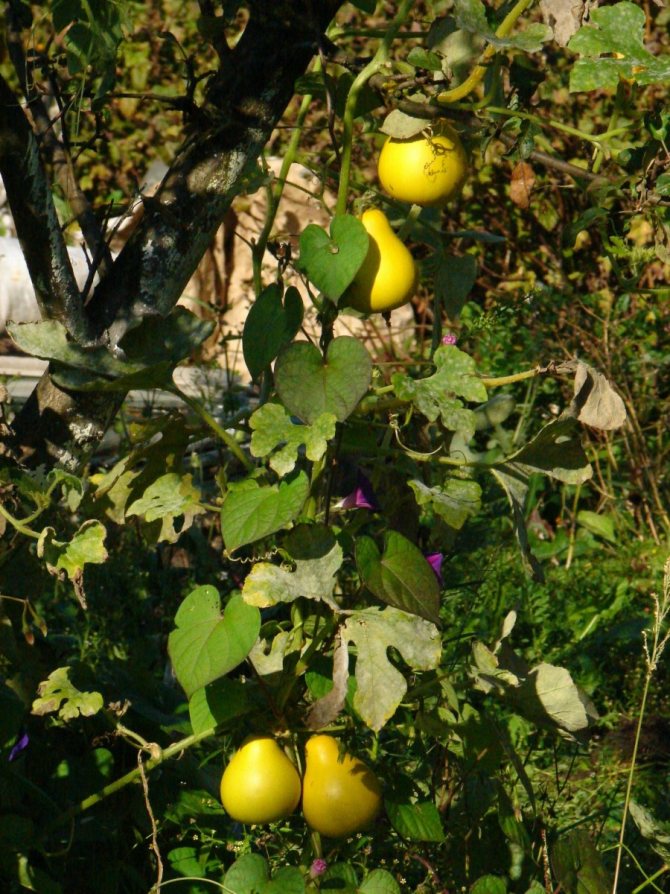

The size and quality of the fruit depends on the growing conditions of the ornamental pumpkin. The culture prefers loose, light, fertile calcareous soils, sandy loam, sandy loam or loamy chernozems. Ornamental pumpkin does not like acidic soils, but it can withstand salinity. A decorative pumpkin should be planted in well-heated areas protected from cold winds.
A big minus of decorative pumpkins is the lack of frost resistance.
Young plants of ornamental pumpkin are sensitive even to slight spring frosts and die already at a temperature of -1 ° C. That is why decorative pumpkins are often grown as seedlings.
Apart from frost, ornamental pumpkins cannot tolerate poor soils and lack of moisture. Therefore, special attention should be paid to the care of ornamental quads on fertilization and watering. The more often you water and fertilize your pumpkin, especially with organic fertilizers, the better it will grow. And if you make a foliar feeding of the pumpkin with urea or a complex fertilizer with a predominance of nitrogen, then it will grow by leaps and bounds.
Decorative pumpkins are light-requiring, it is better to plant them in a sunny place, but light partial shade is acceptable.
In the shade, the plants do not bloom well, the ripening and coloring of the fruits slows down, the color is dull. The more sun, the brighter and more beautiful the color of the fruit will be. Of course, you can plant a decorative pumpkin near the northern wall of the house, but then you should not count on an abundance of flowers and, even more so, fruits.
Pumpkin varieties for the Moscow region
The climate of this region is conducive to the cultivation of pumpkins, but the representatives that give the highest yield stand out.
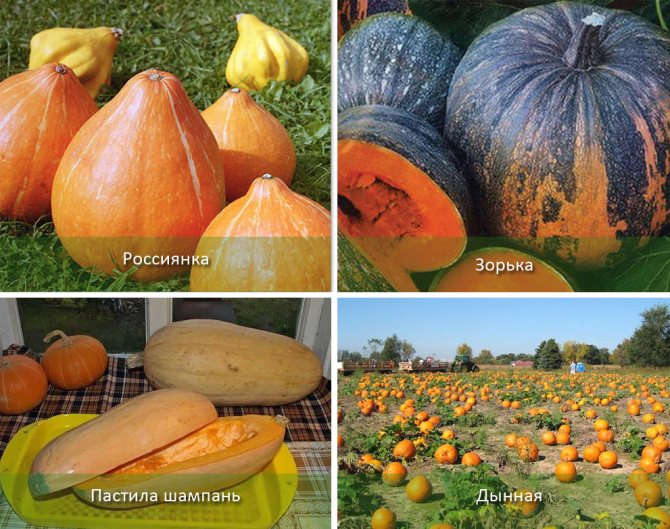

| Variety | Description | Ripening period (days) | Application |
| Chit. | Small fruits with a slightly juicy sweetish pulp. The crust is dense, colored gray-green with small transverse stripes. It can be stored for a long period. The bushes are resistant to various diseases, but they are favored by insect pests. | 120-130. | Diet food. |
| Sweet pie. | Rounded pumpkin with juicy yellow flesh, capable of gaining up to 3 kg of weight. It does not deteriorate for a long time, it is quite unpretentious. | 90-100. | Soups, sweets. |
| Melon. | The most popular variety due to its characteristics. It can grow up to 30 kg, while it has a sweet, delicate pulp, rich in vitamins, tastes like a melon. It can survive frost and drought, it can be stored for a long time. | 115-120. | Baby food, juices, salads. |
| Champagne pastila. | Large, oblong fruits with a thin, pale orange rind. The pulp is dense, has a light vanilla aroma, reminiscent of carrots. | Mid-season. | Juices, stews, pies. It is consumed fresh. |
| Dawn. | Large-fruited pumpkin of unusual color: bright orange and yellow spots appear on the dark green rind. The pulp is juicy, has a sweetish taste. | 100-120. | Diet food. |
| Russian woman. | Medium-sized fruit with orange peel. The pulp is loose, sweet, and tastes like a melon. A very productive variety that can withstand sudden changes in temperature and frost. | Early ripe. | Sweets, pastries. |
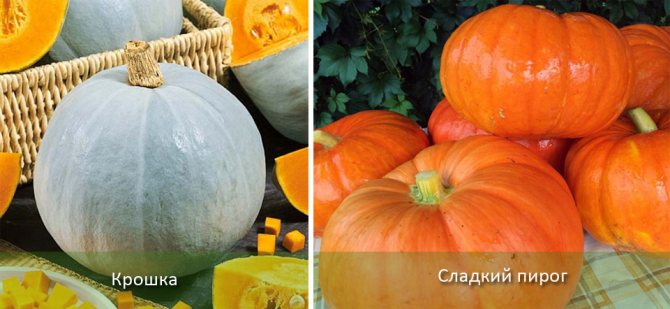

Place for a decorative pumpkin
When choosing a place for growing a decorative pumpkin, it should be borne in mind that it needs a fairly reliable support, since by the end of summer, the stems and leaves of the creeper form a large green mass. The pumpkin reaches its maximum decorative effect by the middle of summer. In July-August, she completely curls the support provided to her, creating a solid green screen, decorated with large bright yellow flowers and small fruits.
For a decorative pumpkin, as a support in the garden, anything vertical is suitable that you want to hide from prying eyes or decorate with something - a fence, a wall of some outbuilding, a gazebo, pergola or arch.
Our advice:
Even an old, dried tree is suitable for support.
With the help of its antennae, this vine is able to climb to a great height, but as the shoots grow, they must be tied up for greater reliability. The decorative pumpkin looks especially good in gardens decorated in a rustic style that is fashionable today, where garden and flower bed plants easily coexist. It can even be used as an original border, laying out long shoots along paths, ridges, flower beds.
Pumpkin Pear-shaped: characteristics of the fruit
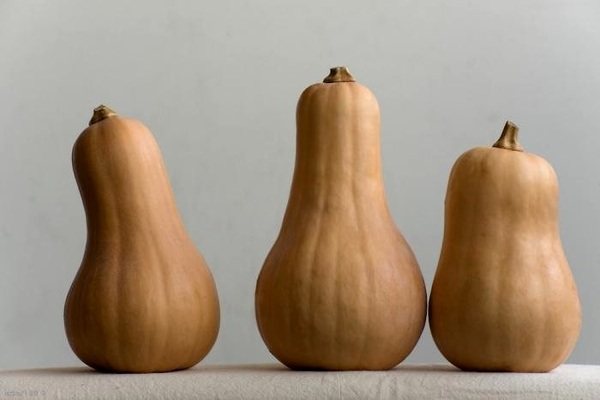

Pumpkin Pear-shaped: characteristics of the fruit
The fruits of this type of pumpkin have an unusual shape, for which they were called pear-shaped. There are some differences in varieties, but they all differ in their characteristic shape. As a rule, the stores sell sets of seeds, where there are different varieties of this species.
Today there are about a dozen varieties of pear-shaped pumpkin. From one seed, 20 to 30 fruits are obtained. The color of the fruit can also be different: orange, red, yellow, cream. May be streaked or stained. Smooth or pimpled varieties can be found to the touch. The pear-shaped shape is also different for everyone. For example, the Cobra variety is somewhat elongated in the thin part, the Korona variety has a star-shaped lower part, the Sweet dumping variety has a segmented lower part of the fruit. The most classic variety is the Bottle Leginaria. There are many varieties with crooked thin parts of the fruit (Nativ, Swan Neck, Peanut Butter).
I must say that they all taste very mediocre, the peel is very dense, and the pulp is almost nonexistent or not juicy at all, you can eat it, nothing bad will happen to you, but it is unlikely to be tasty. Basically, these plants are more decorative in nature, or are used as a basis for various crafts. Handmade lovers will appreciate these fruits, unusual in shape, because they can be used to make very unusual crafts. However, there are varieties that are quite suitable for human consumption. For example, Peanut or Baby Boo. The latter got this name because of the unusually small fruits; some experienced gardeners grow this variety even at home. The Sweet Dumping variety is suitable for consumption, only it must be plucked when it is not yet ripe, otherwise the fruit will harden.
Planting a decorative pumpkin
Of the climbing annuals, the decorative pumpkin is not only quite original, but also very unpretentious in cultivation. It reproduces by seeds. Ornamental pumpkin is grown by seedling and sowing in the ground.The soil is prepared in the fall - they add rotted manure (5 kg / m2), mineral fertilizers such as azofoska (40 g / m2) and dig it to a depth of 25-30 cm.
Seeds for seedlings are sown from April 25 to May 5 in cups or peat pots with a diameter of 10-15 cm, filled with a light nutrient mixture.
To speed up germination, the seeds are soaked for a day in a solution of any growth stimulant and immediately sown. The best germination of pumpkin seeds after 3-5 years of storage, fresh seeds are often not germinating. In open ground, seeds are sown in the second decade of May, when the air temperature reaches 15-18 ° C, and the soil warms up to 12 ° C. Close them up to a depth of 7-8 cm. For normal germination of seeds, pumpkin needs a temperature of at least 12-14 ° C.
When growing ornamental pumpkin seedlings, seedlings are planted in a permanent place in June, when the threat of recurrent frosts has passed.
Ornamental pumpkin does not tolerate transplanting very well, so the transfer from plastic cups must be done very carefully so as not to disturb the root system. For the pumpkin, make holes at a distance of 70-80 cm, 15-20 cm deep, fill them with fertile soil, add a handful of complete mineral fertilizer. Seedlings at the age of 25-30 days are planted deeper than they sat in the pot, sprinkling with earth up to the cotyledon leaves, so that the root collar is several centimeters below the soil level.
Later, when root tubercles appear at the base of the stem, soil is poured onto it.
If late spring frosts are expected, the seedlings are covered with plastic bottles or film. Pumpkins bloom in June, and from about mid-July, the formation of the first fruits already begins and it lasts until the end of autumn.
How to dry decorative varieties
Zucchini will easily survive the winter in the right conditions. But if you use them as a decorative element, then wait until the cutting is completely dry and only then pluck it, leaving a few centimeters of the stalk. Select fruits that are not covered with rot or disease so as not to infect others. It will take time to completely dry the zucchini. The shell of the fruit will dry out first and become very tough. It will take a few more months for the pulp to dry. Dry pumpkin should be in a ventilated area, hanging them on a rope. Check each one for mold. If found, you can wipe it with a cloth soaked in bleach.
Caring for decorative pumpkin
With a large leaf area, the crop evaporates a lot of moisture and needs infrequent but abundant watering.
Water the decorative pumpkin with warm water.
If the plants grow poorly during the summer, the soil is carefully loosened, mulched with peat or humus. Consuming a large amount of nutrients from the soil, the plant is extremely responsive to fertilization. A week after planting or three after the emergence of seedlings, the plants need to be fed with complex fertilizer (1 tbsp. Azophoska spoon under the bush) and then thoroughly water.
In the northern regions, in order to accelerate the ripening of fruits, a month before the onset of frost, the lashes are pinched.
Pumpkin is harvested in dry weather, usually in September - October before the onset of frost, in the south after the leaves die off. When harvesting, it is necessary to preserve the stalk and prevent damage to the fruit. The optimum storage temperature for pumpkin is 16-18 ° C. In no case should pumpkins be stored in wet basements - they will rot.
What diseases and pests affect pear-shaped pumpkins
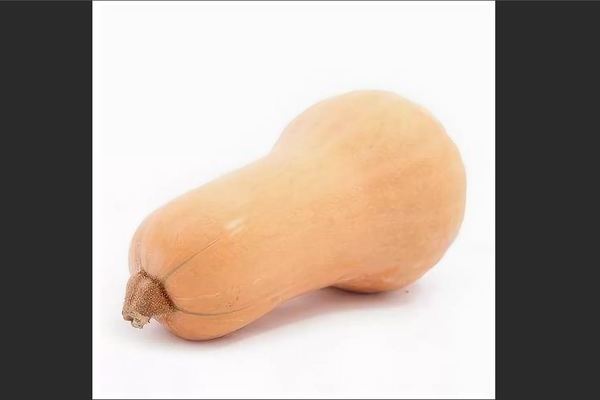

What diseases and pests affect pear-shaped pumpkins
The pumpkin family has a fairly average resistance to pests and diseases. Much depends on proper care and early detection of pests. Of the diseases, decorative pumpkins are most often susceptible to powdery mildew and all types of rot, bacteriosis is possible.Leaves can become food for aphids or spider mites. The methods of dealing with them are standard - treatment with acaricide or the use of everyone's favorite folk methods. Although in this case, if there is no neighborhood with other edible crops, you can immediately use chemical methods to achieve a quick and better effect. A solution of copper sulfate, in a ratio of 1% to 3%, will help in the fight against fungal diseases, you can try using colloidal sulfur. The most effective method is preventive measures. You just need to spray it with a solution of copper sulfate once a month.
How are finished pumpkins processed?
When using dried pumpkins to decorate the interior of the house, you will have to pre-process the vegetable. First, all fruits are polished with sandpaper to get rid of the husks on the surface. Then a drawing is cut out on the walls and painted. Some wax the surface of the fruit to make it stronger.
When making dishes, pumpkins are drilled with a drill with various drills in order to make holes of the required diameters in them. Before starting drilling, the vegetable is opened and all seeds and pulp are removed from it.
Soil and lighting requirements
The plant is tolerant to almost all types of soils, but humus-rich, moderately moist soils with sufficient drainage are the best option. The optimum level of soil acidity (pH) is 6.5. Before planting, compost should be added to the soil, the amount of which will depend on the natural characteristics of the soil.
The plant will feel much worse on the site where the following related crops grew before:
- zucchini;
- squash;
- cucumbers.
The most favorable precursors for pumpkin are:
- tomatoes;
- carrot;
- onion;
- cabbage;
- winter cereals such as wheat or corn.
Sometimes gardeners fear that the plant may become sick or die due to groundwater lying close to the surface. In fact, it has no effect on the growth and yield of the pumpkin.
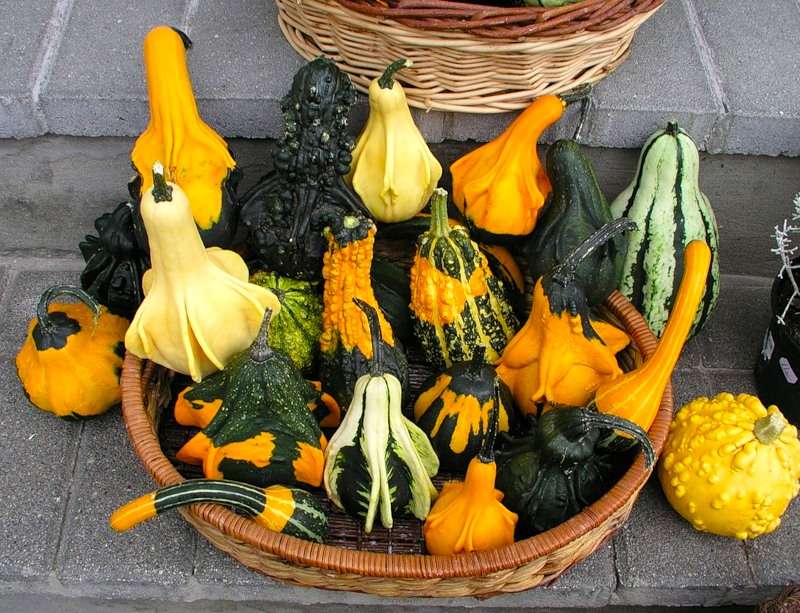

Pumpkin is a light-loving plant. It will grow best in an area that is illuminated by direct sunlight for at least 6 hours a day. In this case, you can count on the maximum yield and the best quality of the fruit.
At the same time, the plant can grow quite well in partial shade. Knowing this, some gardeners use this type of pumpkin to protect other plants from weeds. Planted in corn beds, a curly ornamental pumpkin takes up space while preventing weed growth and beautifying the garden.
For porridge
It is believed that the most delicious porridge comes from starchy, not too juicy varieties. The flesh of such pumpkins is crispy, slightly dry, but not very fibrous.
Dawn
What is the difference:
- The form. Rounded, slightly elongated, with dimly outlined segments.
- Weight. It is about 7 kg.
- Color. Greenish gray with orange spots. Inside a bright orange hue.
- Pulp. Dense, not very juicy, but tasty. Contains many vitamins.
- Resistant to parasites and diseases. Average.
- The growing season. You can harvest in 110 days.
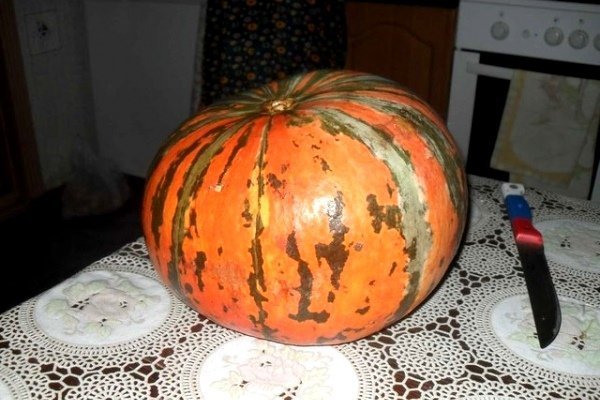

Granddaughter
Features:
- The form. Rounded, slightly flattened, with a rough surface.
- Weight. About 2-3 kg.
- Color. Greenish or orange, there are mixed options. Inside it is yellowish.
- Pulp. Dense, starchy, with a nutty flavor.
- Resistant to parasites and diseases. Increased.
- The growing season. It takes 105-110 days to ripen.
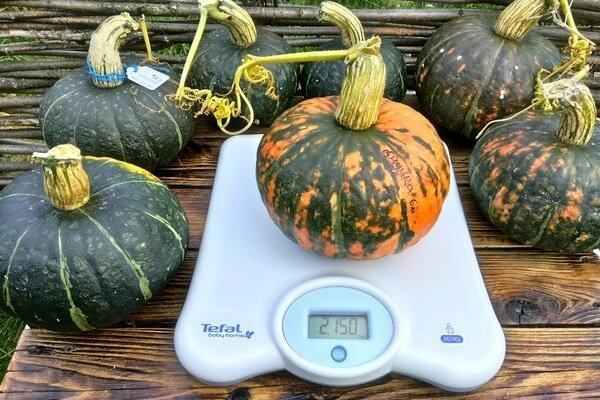

Smile
About the grade:
- The form. Spherical, slightly flattened at the top and bottom, neat.
- Weight. A very small variety, pumpkins grow up to about 700 g, sometimes up to 1 kg.
- Color. Orange skin with thin light stripes. Inside the pumpkin is orange.
- Pulp. The fruits are sweet, aromatic, but not very juicy.
- Resistant to parasites and diseases. High. Are subject only to decay.
- The growing season. Ripens quickly, in just 80 days.
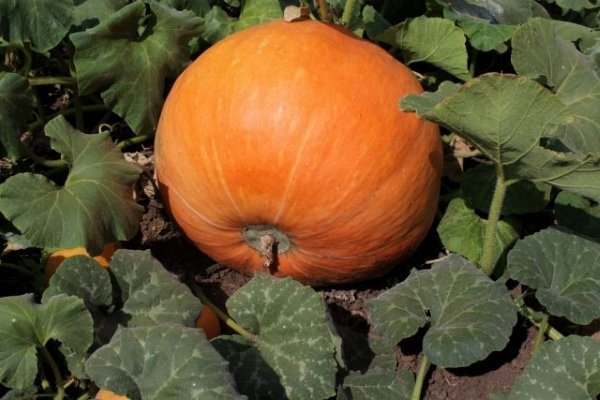

With an unusual taste
The varieties presented below have unusual taste characteristics.
Marina from Chioggia
What is special:
- The form. Slightly flattened, covered on the outside with growths resembling warts.
- Weight. Possible up to 12 kg.
- Color. Intense, poisonous green. Inside is bright yellow.
- Pulp. Has a very interesting flavor of hazelnuts and sweet exotic fruits.
- Resistant to parasites and diseases. High.
- The growing season. The crop is harvested 130 days after germination.
Other names of the variety are "Sea Monster" and "The Frog Princess".
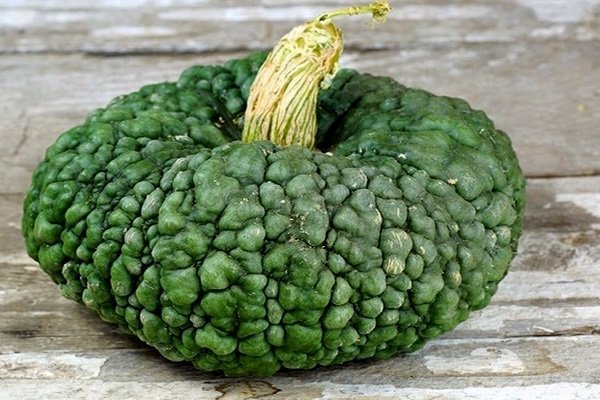

Pastila Champagne
What's unusual:
- The form. It resembles a vegetable marrow. Oval, oblong, with indistinct segment lines.
- Weight. It fluctuates in the range of 2.5-3.5 kg.
- Color. The skin is orange-pink, with a tinge of green. The inside of the pumpkin is yellowish.
- Pulp. Has a vanilla aroma and a light melon flavor.
- Resistant to parasites and diseases. Average.
- The growing season. It takes 90 days for the pumpkins to fully ripen.
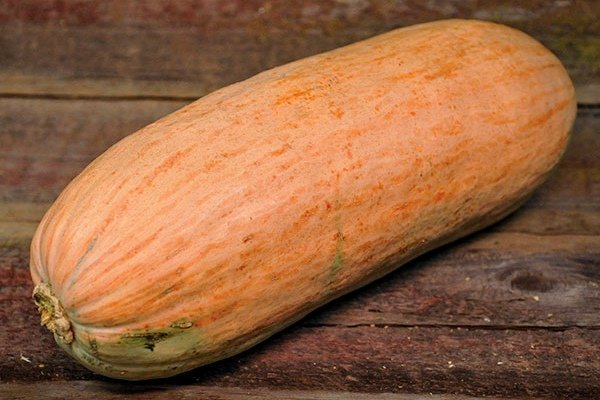

Recommendations for growing pumpkin
Having chosen a variety, you can start growing, but first it is worth reading the recommendations of experienced gardeners:
- The seed is ideally purchased abroad (foreign varieties) or from private farmers specializing in pumpkin cultivation. Otherwise, there is a high risk of getting misgraded.
- The plant is thermophilic, you need to choose a sunny place for planting.
- The growing soil should be light, nutritious, air-capacious, and neutral in acidity.
- Excessive watering will lead to watery fruits. It is better to water the pumpkin less often, but more abundantly. During the ripening of the fruits, watering stops.
- Agricultural technology necessarily includes weeding and pinching of the lashes.
- The vegetable is very fond of mineral dressings, especially potassium. He also needs organic fertilizers (manure, bird droppings). One of the cultivation methods is to place the plant on a compost heap under a film. This will help reduce the amount of fertilizing and watering.
Learn about the structural features of a pumpkin.
The many varieties of pumpkin give everyone the opportunity to choose the most suitable variety for themselves. The article provides a description of the most famous types of this melon culture, both edible and decorative.
General information and classification
This vegetable crop, also known as garmel, is widely known among amateur gardeners and in industrial cultivation.
Depending on the thickness of the outer skin, all pumpkin varieties are divided into 3 groups:
- firm-bark (fruits are covered with a hard crust with a waxy coating, the shape of the pumpkins is elongated, cylindrical);
- nutmeg (the skin is thin, soft, and the fruits are elongated);
- large-fruited (varieties with soft skin and round pumpkins).
Large-fruited pumpkin is grown in personal plots most often. It produces very large fruits. Hardy pumpkin varieties are stored for a long time, but are characterized by small pumpkin sizes. The sweetest varieties are categorized as butternut squash.
All types can be divided into groups depending on the purpose:
- feed pumpkin;
- decorative varieties;
- canteens;
- pumpkin varieties for juice;
- varieties for seeds.
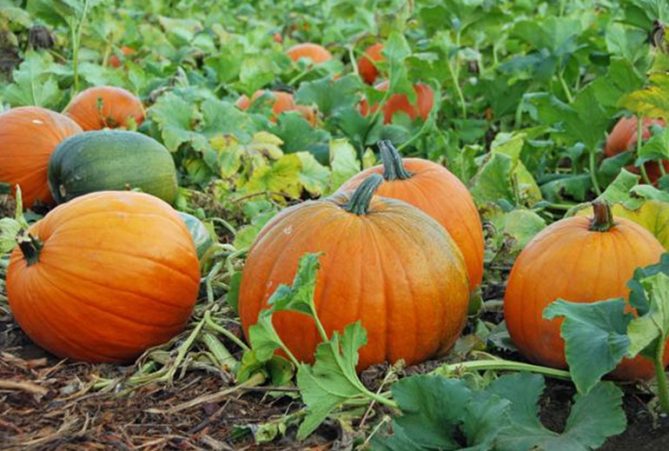

Harvesting
Ripe vegetables can only be harvested after the peel acquires firmness (it grows until about September), and the stalk becomes completely dry.
Select fruits that have not been damaged by frost.
The harvested crop should be stored in a dark and cool room, protected from direct sunlight.
Try to lay out the fruits so that they do not touch each other. The optimal distance is 5-7 cm.
Check your produce regularly for rot or mold (it is best to get rid of these vegetables right away).
To determine if the pumpkin is dry, you need to shake the fruit. As soon as the dry seeds knock on the inside, the product is ready to be used for decorative purposes.It usually takes about 6-8 months to dry completely.
Under the right conditions, the vegetable can be stored for a year.
Muscat
Varieties of this type were first obtained in the south, in Mexico. It is considered one of the most popular pumpkin varieties due to its pleasant nutmeg aroma and long shelf life.
Spanish guitar
What to look for:
- The form. It resembles the musical instrument of the same name. Elongated at the top with a slight thickening towards the bottom.
- Weight. Usually no more than 8 kg.
- Color. Outside is pale orange, with shades of gray, inside is brighter.
- Pulp. The taste is unusual, with hints of apricot.
- Resistant to parasites and diseases. Requires additional protective measures.
- The growing season. The ripening period ranges from 100 days.
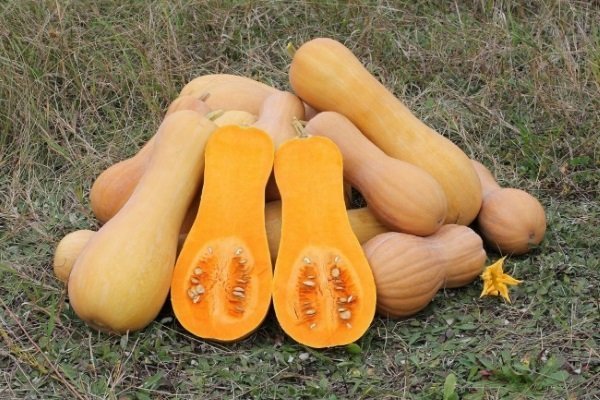

Muscat de provence
What are the characteristics:
- The form. Flattened inside, with rounded edges and pronounced segments.
- Weight. Not very large, up to 4 kg.
- Color. Brown, with a slight almond tint. Orange inside.
- Pulp. Full of juice, sweetness.
- Resistant to parasites and diseases. Average.
- The growing season. Ripening can take up to 110 days.
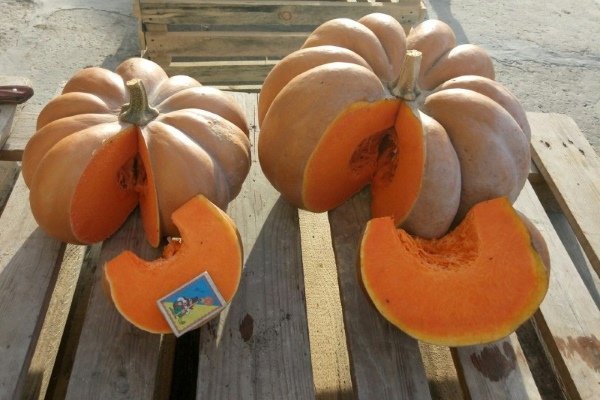

Nut
How to distinguish:
- The form. It resembles a pear. Elongated at the top with thickening towards the bottom.
- Weight. Fruits are small, up to 2 kg.
- Color. The skin is light orange, with thin green stripes at the stalk. Inside, the shade is more saturated, with a yellowish cut of the skin.
- Pulp. Has a pleasant taste with hints of nut.
- Resistant to parasites and diseases. Low.
- The growing season. It takes 90-110 days to get the harvest.
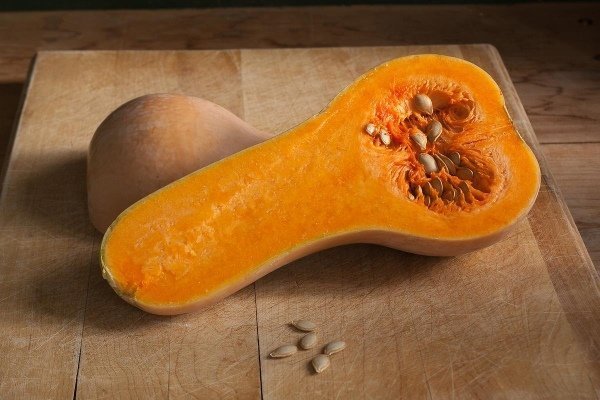

Mid-season
It will take 91 or more days to ripen a crop of pumpkins of this variety. They are distinguished by good keeping quality and can be stored for quite a long time.
Gilea
What are the traits of plants:
- The form. Round, smooth, the segments are distinguished by barely noticeable grooves.
- Weight. It ranges from 6 to 9 kg.
- Color. The rind is pleasant orange. Inside, the colors are bright orange.
- Pulp. Sweet, juicy, with hints of nutmeg.
- Resistant to parasites and diseases. Good.
- The growing season. It matures for 110 days.
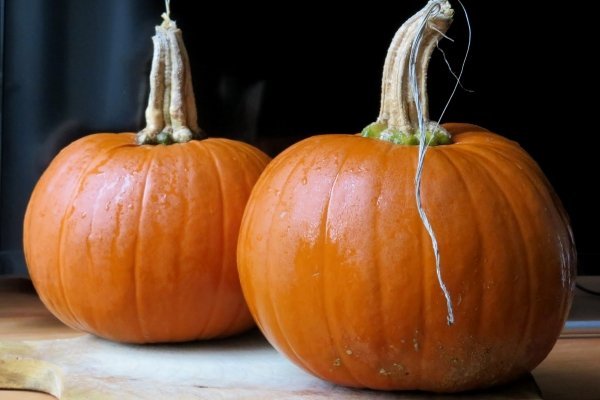

Almond
A little about the parameters:
- The form. Rounded, smooth, slightly flattened in the center.
- Weight. Pumpkins grow up to 5 kg.
- Color. Red-orange with rich green stripes that outline the segments. Inside is bright orange.
- Pulp. Differs in high juice content.
- Resistant to parasites and diseases. Average.
- The growing season. Ripens in 110 days.
The pumpkin can be stored for up to 9 months.
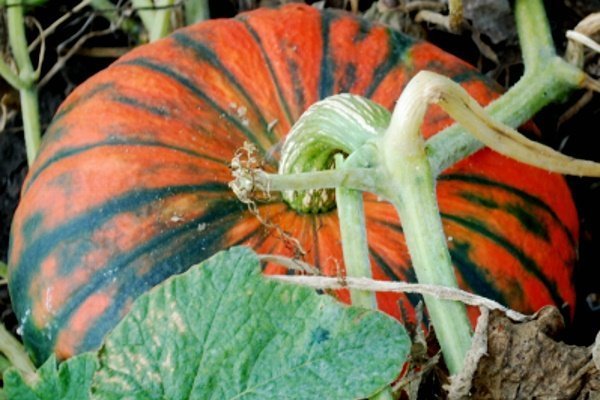

Ogurdynia
What is interesting about the variety:
- The form. Elongated, resembles a squash or cucumber.
- Weight. Usually small, about 1 kg, the largest representatives reach a mass of 5 kg.
- Color. Saturated, poisonous and light green stripes alternate. Inside it is yellowish.
- Pulp. The taste is similar to cucumber, full of juice.
- Resistant to parasites and diseases. Average.
- The growing season. On average, it takes 105 days to mature.
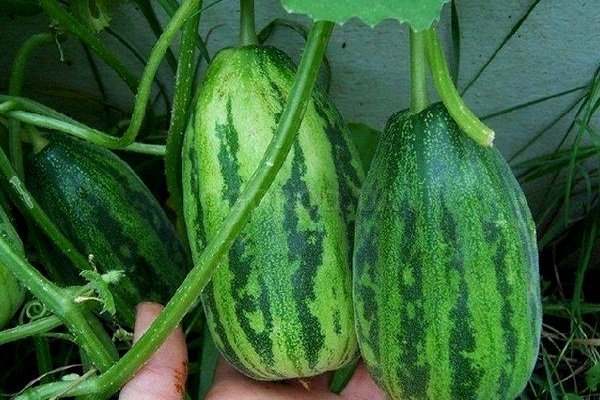

How to protect a plant from harmful insects and diseases?
Both insects and diseases are capable of killing a decorative pumpkin. Protecting this culture from them is the direct responsibility of the gardener. The most dangerous are:
- aphid;
- bacteriosis;
- slugs;
- powdery mildew;
- white rot;
- root rot.
Powdery mildew appears as white and gray spots on the foliage or stem. Plants that grow in the shade or in a climatic zone with a sharp change in temperature are especially striking. If you do not start timely treatment with special chemicals, then the disease will affect all organs of the plant, as a result, it dries up and dies.
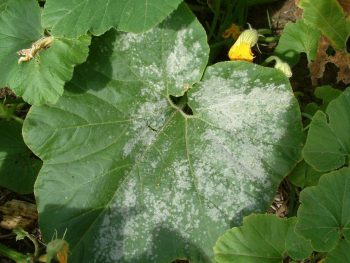

Spray on time to avoid powdery mildew on the leaves.
Root rot attacks the plant at the root.To avoid this, you need to treat the seeds before planting with disinfectants. If, nevertheless, the disease manifests itself, then you need to pour clean and new soil, peat and humus to the root of the plant. When affected by white rot, the plants are covered with neoplasms in the form of cotton wool and begin to get wet. All affected areas are removed and the pumpkin is sprinkled with chalk or charcoal. Slaked lime and ash will kill slugs, which are especially fond of eating pumpkin on rainy days.
Tip # 1. If brown spots are present on the leaves, then this is a bacteriosis phenomenon. Spray the plants with Bordeaux liquid to prevent it.
Late ripening
The ripening period is 120 days or more. Typically large pumpkins grow with dense skin and long shelf life.
Atlant
Features:
- The form. Rounded oval.
- Weight. Medium - about 20-30 kg, but under good conditions, you can get fruits weighing up to 70 kg.
- Color. The skin is smooth, orange in color, in the context of the pumpkin is golden orange.
- Pulp. Slightly oily texture, sweetish.
- Resistant to parasites and diseases. Good.
- The growing season. Harvested 140 days after disembarkation.
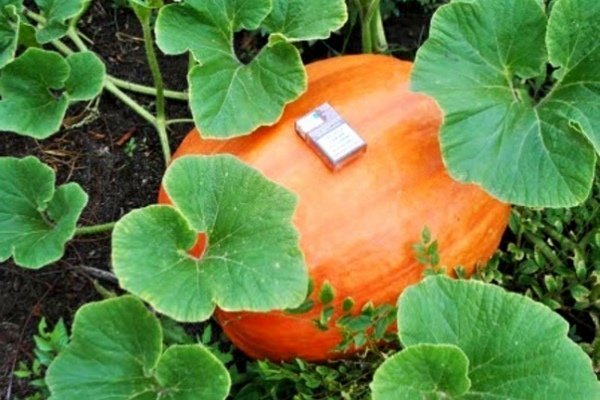

Big Max
How to distinguish:
- The form. Rounded, without signs of segmentation. The surface is lined with small convex grooves.
- Weight. On average, it is 15 kg.
- Color. The skin is bright orange in color, which can be diluted in places with cream spots. In the context of orange.
- Pulp. Pumpkins are dense, sweetish.
- Resistant to parasites and diseases. High.
- The growing season. Harvesting takes 130 days from germination.
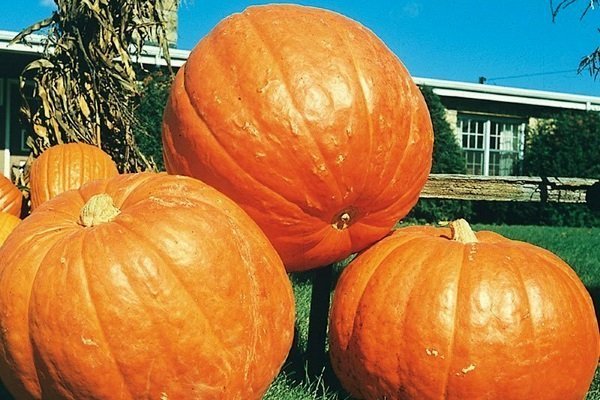

Titanium
Information:
- The form. It has a rounded, clearly segmented shape.
- Weight. It is considered the largest representative of the species. Fruits heavier than 100 kg can be grown.
- Color. The skin is orange, the contents are slightly darker.
- Pulp. A bit bland. Usually grown for large fruit.
- Resistant to parasites and diseases. Good enough.
- The growing season. It sings in 120-140 days.
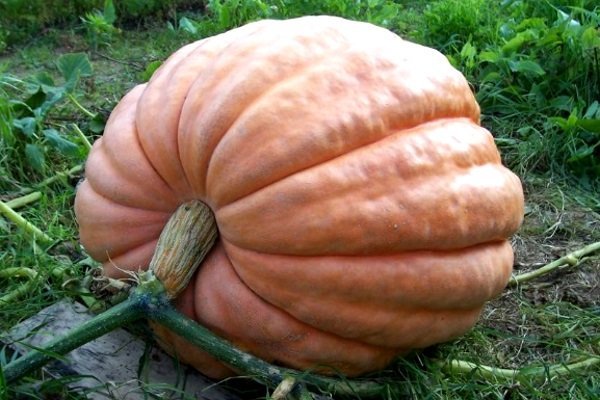

Reviews of summer residents
Most summer residents prefer to grow beautiful and juicy pear-shaped pumpkins. Many are attracted by the classic orange color and melon aroma. However, sometimes expectations are not met: instead of large and attractive fruits, small and watery pumpkins grow.
Arina, Ufa: “I have been growing pear-shaped pumpkins for a long time. My favorites are Novinka and Zhemchuzhina varieties. They are similar to each other, have a juicy and sweet pulp. However, the Novinka variety is more productive. I dry the pumpkin seeds and add them to baked goods, and from the pulp I make porridge and sweet jam for the winter. "
Olga, Moscow: "I prefer only nutmeg varieties. They have amazing taste and aroma. In leaving, they are capricious, but if all agrotechnical rules are followed, problems do not arise. I especially like to make vitamin juice with ginger and lemon out of them, as well as cook porridge for breakfast. "
Milan, Yekaterinburg: “I always plant pumpkins in the greenhouse. I especially love Pineapple. She is unpretentious in care, rarely gets sick. Before planting, be sure to disinfect the seeds and prepare the seedlings. I harvest in early September. We eat something right away, and leave the other part for the winter. "
Features of sweet pumpkins
A number of varieties of this type, such as Large-fruited pumpkin (giant, maxim), are famous for the highest sugar content. It is a botanical term and the fruit size can be small, especially in the newer varieties.
In addition to the sweetest varieties of pumpkin, the aromatic varieties are highly valued, especially the varieties of the Butternut pumpkin. Their sugar content may not exceed 5-6%, but the original smell creates a spicy aftertaste sensation.
A number of varieties of another botanical variety, the Hard-bore Pumpkin, also smells good (their record sugar accumulation is up to 6-8%).
Seed selection
The quality of the crop largely depends on the selected seeds for further planting.Therefore, it is recommended to pay attention to the choice of planting material.
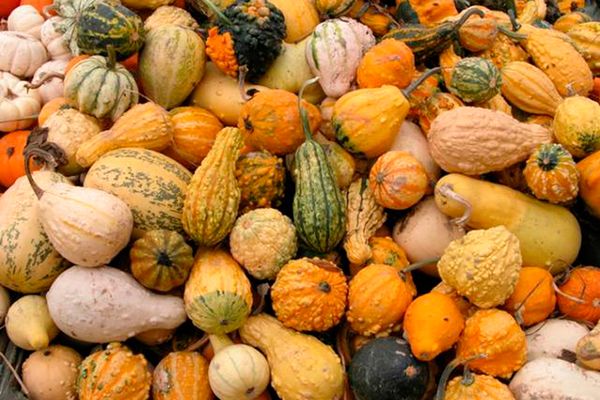

If the pumpkin is eaten, then pay attention to the size of the variety. To make the fruits tastier and sweeter, varieties with small fruits are chosen for planting.
During the selection, attention is paid to the appearance of the planting material. Its rind should be perfectly smooth and free from surface defects. If there are wavy stripes on the peel, then it is better not to choose such seeds, since they contain nitrates. Also, do not use seed with dark spots on the surface for planting.
Care after landing
Caring for a decorative pumpkin is no different from caring for other plants. Regular watering and weeding is a must. Moreover, it is necessary to water, so that water does not fall on the leaves, they can turn yellow from this. Loosening the soil when necessary or during weeding. For the formation of beautiful leaves, it is recommended to fertilize with fertilizers twice a month. Since we do not have a goal in obtaining a crop, nitrogen-containing fertilizers or potash fertilizers will be enough.
The only thing that must be done for a decorative pumpkin is to form supports. It can be ropes on the wall, sticks, various nets, someone makes special decorative arches, which looks very impressive. Just imagine how beautifully small orange fruits, surrounded by leaves, will hang from the arch. Most importantly, you need to keep small distances, otherwise the shoots will go in the wrong direction and spoil the whole view. It is better to form the branches ourselves, after 4 leaves have formed from one shoot, you need to pinch it, the most important thing is to tie it to the support in time. You need to water once a week, 10-20 liters very abundantly. water per plant. This is in the first month, at the end of June and July we water much less often, as needed. After watering, you need to loosen the soil or mulch the planting site.
In conclusion, I would like to note that the pear-shaped pumpkin is unpretentious, therefore, any novice gardener can decorate your site with the help of this plant. This is a real find for everyone who wants to quickly decorate their garden, because the leaves are formed at a fairly fast pace and very abundantly, they do not require special conditions, and they last for a very long time, and in the fall they continue to delight you with bright colors of the leaves. We are sure that you will find the view you like from all this variety and no one will remain indifferent to your garden.
Pumpkin Pear-shaped
Varieties with large fruits
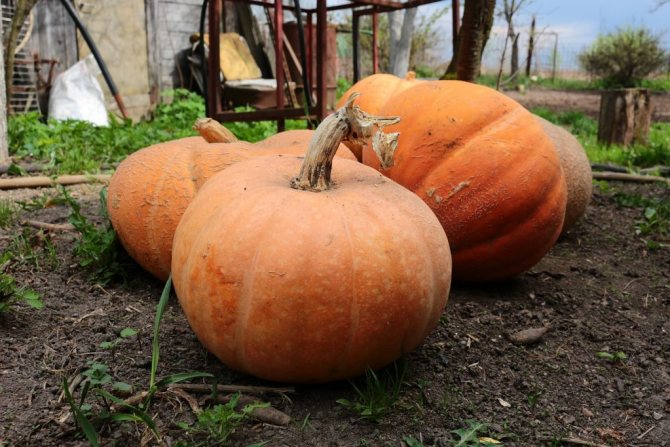

Harvested crop
- Summer residents do not really like varieties that form large pumpkins, since you cannot eat a vegetable at one time, and it is extremely inconvenient to store it in a city apartment.
- Large-fruited pumpkin includes about 100 varieties.
back to menu ↑
See also: Sedum: species and varieties for growing at home and outdoors. Rules for planting and caring for a succulent plant (110+ Photos & Videos) + Reviews
Pumpkin lantern
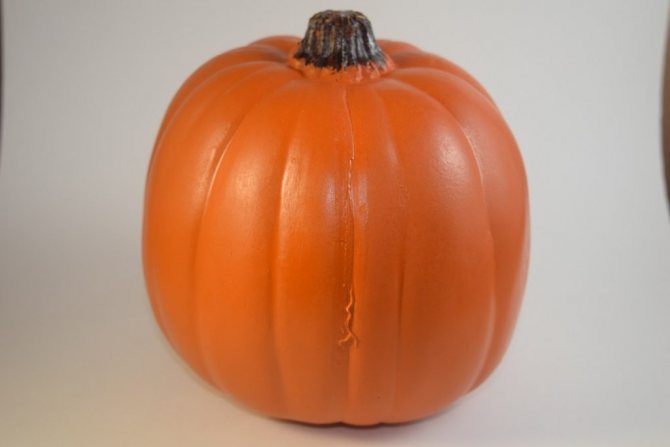

Pumpkin lantern
- Refers to a variety of large-fruited pumpkin. It takes 3-3.5 months for the fruit to ripen.
- Outside, they are smooth, orange-pink, slightly ribbed.
- The shape is rounded, slightly elongated.
- Each specimen weighs 5-6 kg. The inner part is tender, yellow-orange, crispy, juicy.
- A plucked pumpkin can be stored for 3-3.5 months. The variety is suitable for transportation.
- The harvested crop is subjected to heat treatment. Used for making juices, purees.
- The plant is classified as heat-loving, drought-resistant. Planting can affect powdery mildew, bacteriosis.
back to menu ↑
See also: How to make garden paths in the country with your own hands? (80+ Photo options for great ideas) + Reviews
Russian porridge
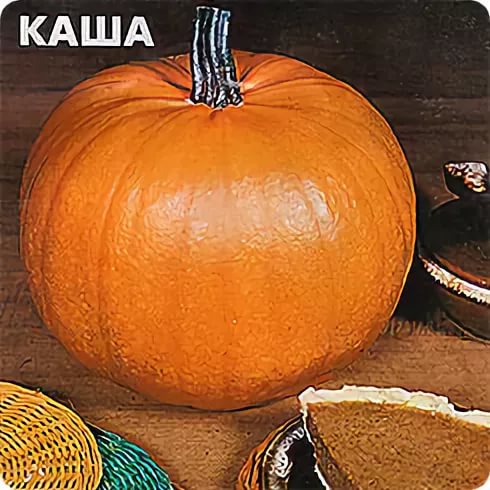

Russian porridge
- Refers to a large-fruited variety. It can take up to 4 months to get the first fruits.
- The variety is considered mid-season.One bush forms 3-4 pumpkins, weighing 6-7 kg of orange-pink color.
- Their shape is rounded, with hardly noticeable ribbing.
- The interior is of medium density, painted orange. Good taste.
- The fruits can be stored.
- From the name, one can already assume that the variety is excellent for stewing, baking, cooking.
- Can also be used for canning, consumed unprocessed.
back to menu ↑
See also: Apple tree: a description of the 25 best varieties with gardeners' reviews about them
Fig-leaved gourd (Cucurbita ficifolia)
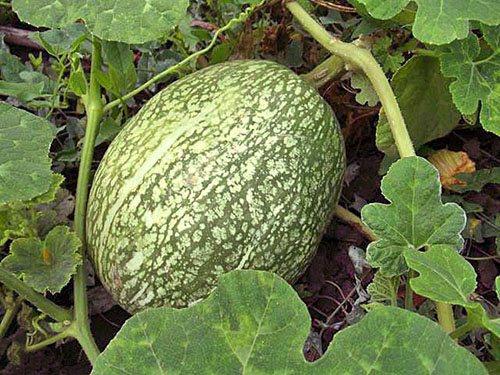

The Peruvian jungle is home to another type of pumpkin, which, unlike the plants already described, is a perennial crop.
Outwardly, a green pumpkin, on the surface of which a whitish bizarre pattern is clearly visible, looks more like an unripe watermelon in cut. The oval or elongated fig-leaved pumpkin has a rough white or yellowish flesh with a sweetish aroma and taste. The seeds also resemble watermelon seeds both in shape and in a hard black shell. Plants are vigorous, climbing, individual shoots up to 10 meters in length.
Green pumpkins of this type are used in vegetable garnishes, having subjected them to heat treatment, and mature ones are raw materials for confectionery and alcoholic beverages. Despite its tropical origin, this type of pumpkin, as in the photo, is easily grown even in the North-West of the country.
Common mistakes gardeners make
- Avoid planting or propping up the pumpkin close to walls and fences. Then there will be no access to the rear of the plants, for control, care and spraying from diseases and pests.
- Be sure to sprinkle mulch on top of the ground. It retains moisture and heat well in the root system.
- Fertilize in the fall, during planting and throughout the growth of the pumpkin. It is advisable to do top dressing regularly. If they are not carried out systematically, the pumpkin will not give yields.
- Do not plant the pumpkin in a small container. Use large pots to grow seedlings to give the root system room.
Rate the quality of the article. We want to be better for you:
Varieties of hard-barked pumpkin
A distinctive feature of this group is the presence of a thick crust. It protects the fruit from damage and decay. Hardy varieties are stored for a long time, they tolerate transportation well over long distances.
A very aromatic and sugary pulp with excellent taste is hidden under the dense skin. For this, they love hard varieties. Typical representatives of this pumpkin variety:
- Bulgarian;
- Bun;
- Gymnosperm.
Bun
The early ripe variety is great for desserts, juices, and the first complementary foods for babies. Due to its pleasant taste, the fruit can be eaten even raw.
Distinctive features:
- many small pumpkins are formed on the plant;
- weight does not exceed 2 kg;
- the pulp is bright, orange;
- pronounced sweet taste due to the large amount of natural sugars in the composition;
- demanding storage conditions, does not tolerate moisture.
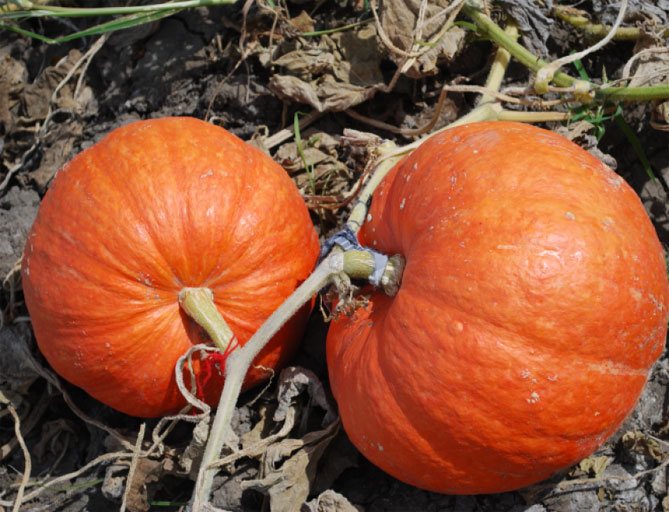

Gymnosperm
A rather capricious variety of this vegetable, obtained by American breeders. Gymnospermous gourd loves warm and humid growing areas. The appearance makes the variety easily recognizable:
- spherical fruits;
- skin color - yellow with green stripes.
Gymnosperm gourd is grown for seeds.
Hard crust
As the name implies, vegetables have a denser skin, which makes them resistant to damage and suitable for long-term transportation.
Olga
What is interesting in the variety:
- The form. Oval, elongated.
- Weight. Reach only 4-7 kg.
- Color. The skin has an interesting, green-yellow color that looks like stripes. Inside a creamy shade. It is noteworthy that the pumpkin seeds are dark green, almost black in color.
- Pulp. The flavor develops more strongly a few days after picking.
- Resistant to parasites and diseases. Increased.
- The growing season. Can be harvested after 120 days.
Pumpkin seeds lack a shell, so the variety belongs to gymnosperms.
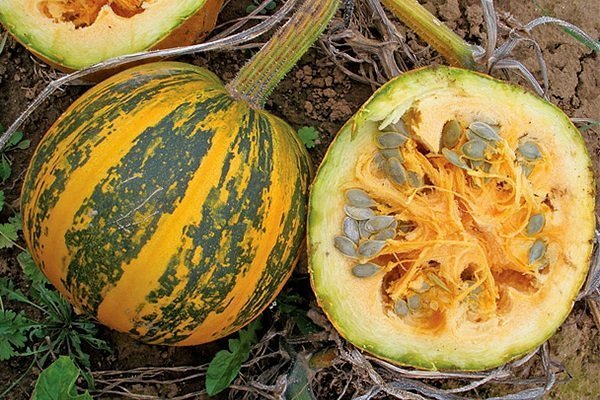

Bun
Main settings:
- The form. Rounded, with poorly expressed segmentation.
- Weight. Very small, only 1.5 kg.
- Color. Outside, the pumpkin is bright orange, sometimes with small white stripes.
- Pulp. Useful for baby and dietetic food.
- Resistant to parasites and diseases. Average.
- The growing season. Harvest time is 90 days after planting.
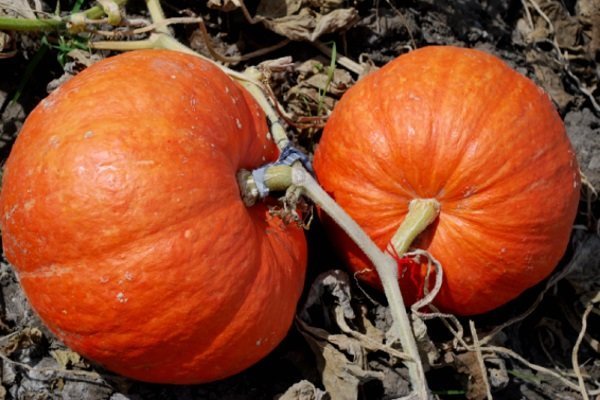

Lady's nail
Specific traits:
- The form. Oval, rounded, looks like a melon, but without a characteristic mesh.
- Weight. Does not exceed 5 kg.
- Color. The skin is grayish or yellow, the pulp is a shade softer.
- Pulp. Delicious enough. But more often it is grown for seeds.
- Resistant to parasites and diseases. Average.
- The growing season. Matures in 95-105 days.
